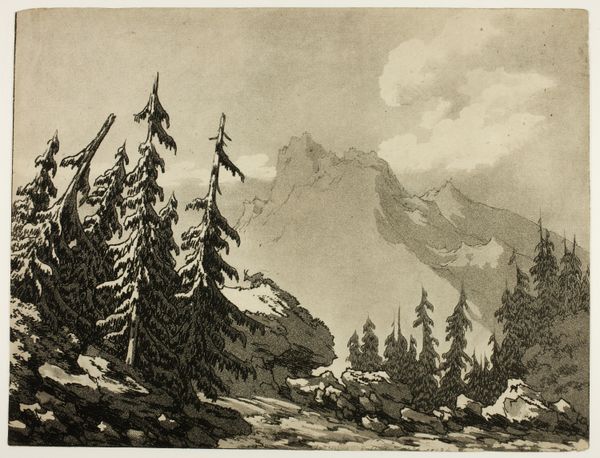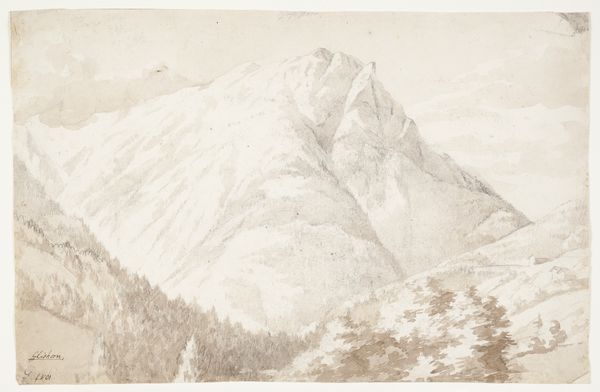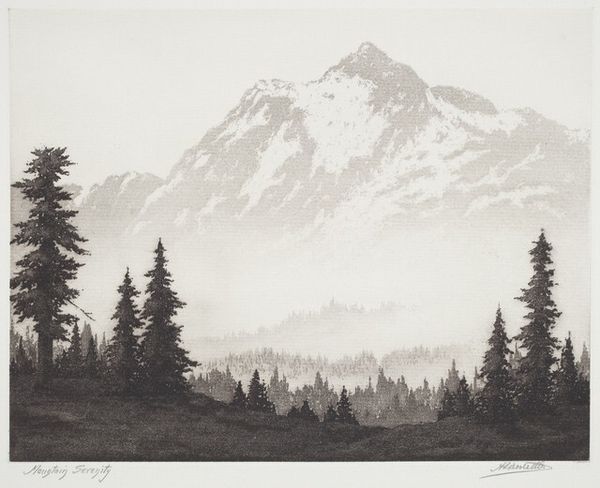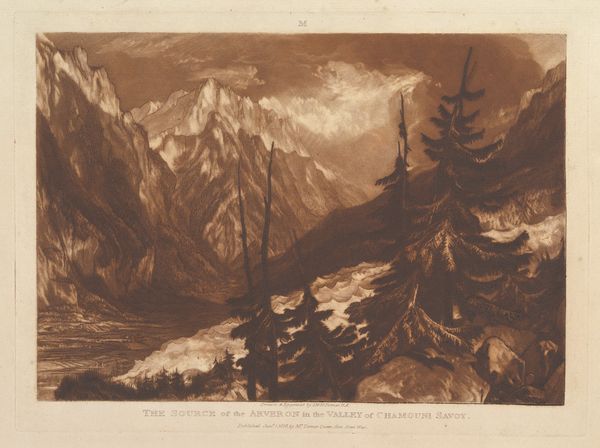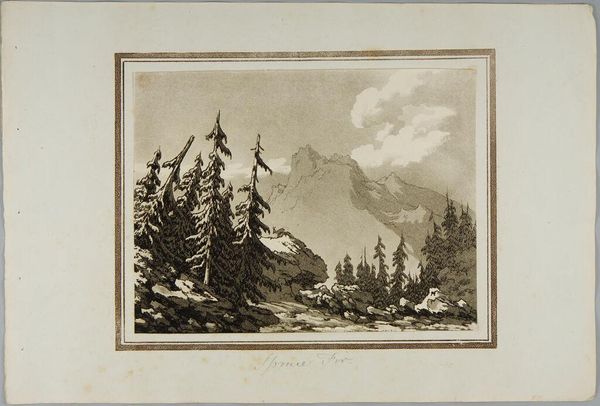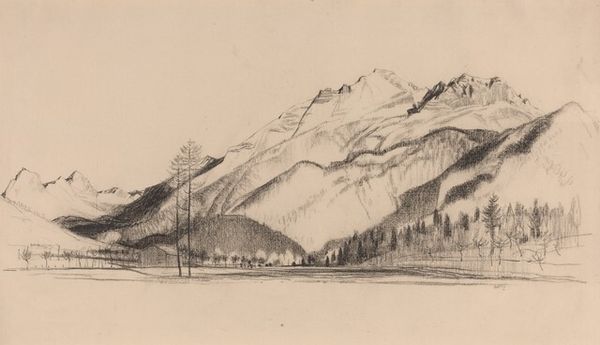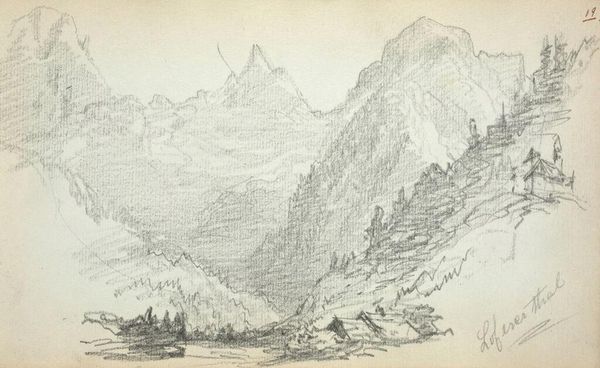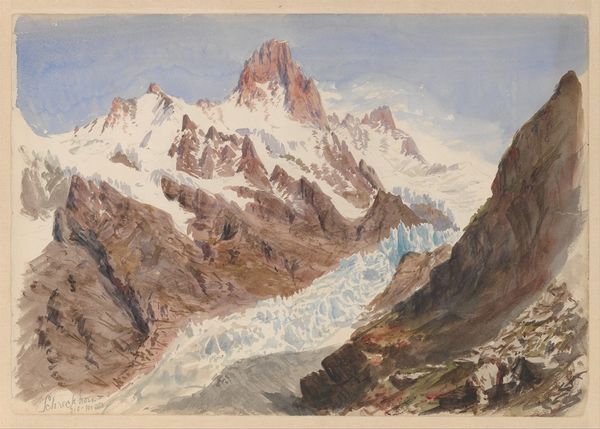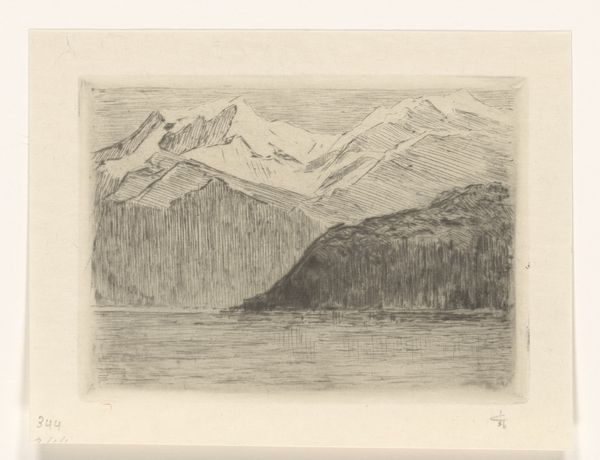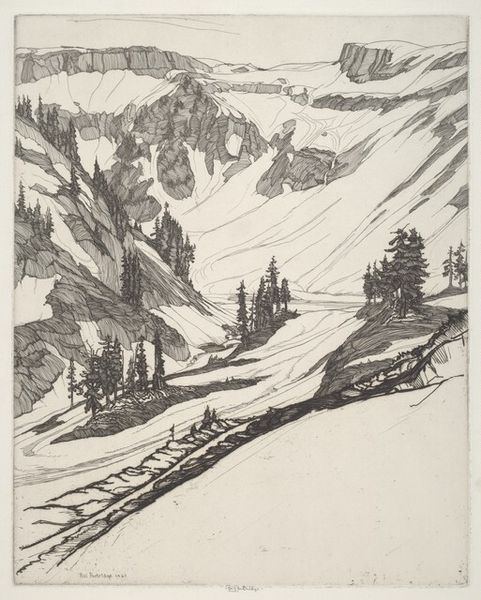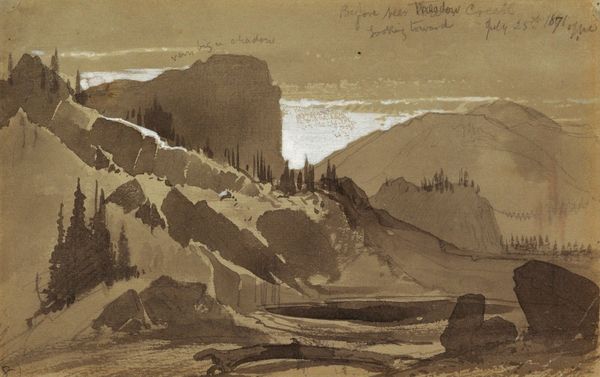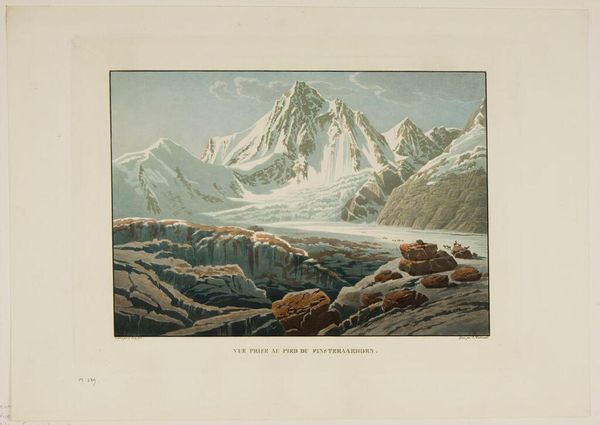
drawing, paper, ink
#
drawing
#
landscape
#
paper
#
ink
#
regionalism
Dimensions: overall (approximate): 25.2 x 28.2 cm (9 15/16 x 11 1/8 in.)
Copyright: National Gallery of Art: CC0 1.0
Editor: So, this is Roi Partridge's "Mt. Shuksan, Washington" from 1927, rendered in ink on paper. I’m struck by the almost harsh contrast between the mountain's sharp, angular lines and the softer, more fluid rendering of the lower landscape. What can you tell me about Partridge’s approach to this work? Curator: What interests me most is Partridge's use of a readily available material like ink to depict such a monumental subject. Think about the labor involved in creating this work: the gathering of materials, the repetitive act of applying ink to paper to mimic the mountain's texture, the choices that Partridge makes along the way. This work collapses the boundaries between 'high art' and the 'everyday'. Editor: That’s a good point! I hadn’t considered how humble the materials are in comparison to the grandeur of the subject. How does this relate to Regionalism? Curator: Consider the social context. Regionalism, prevalent at this time, rejected European abstraction in favor of representing accessible, distinctly American scenes. Partridge focuses on a very specific place and represents the Western landscape, connecting the materials of the artwork back to its location. This drawing also highlights themes such as preservation and labor that are interwoven in landscape representation, specifically of Mt. Shuksan. It asks: for whom and what purposes should Mt. Shuksan serve as raw materials? How does this fit within our understanding of nature at the time? Editor: I see, so by emphasizing the material and the labor behind its creation, he’s making a statement about the accessibility and, maybe, even the commodification of nature? Curator: Precisely. What do you think that reading suggests about his artistic vision? Editor: It paints a more complex picture than just a scenic landscape; it encourages a critical engagement with our relationship to nature and art. Curator: Indeed, and through analyzing the materiality, production, and social implications, the work can teach us about resource distribution, land usage and ethics. Editor: I never thought about approaching landscape art this way, focusing on material culture!
Comments
No comments
Be the first to comment and join the conversation on the ultimate creative platform.
